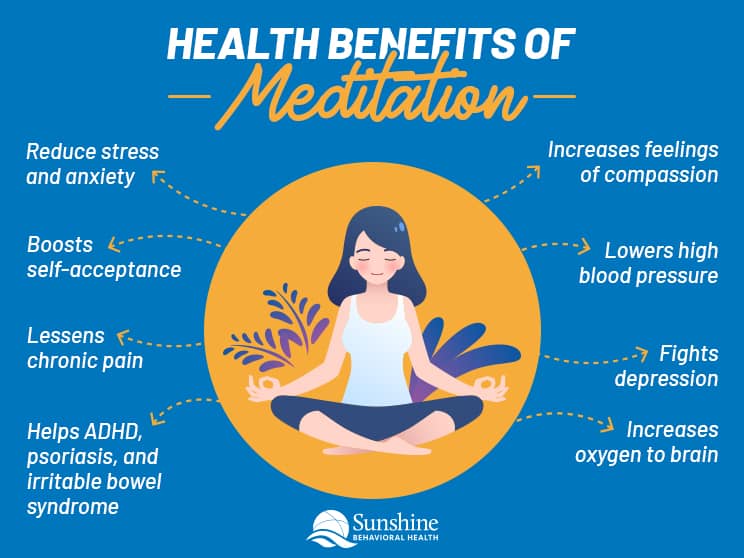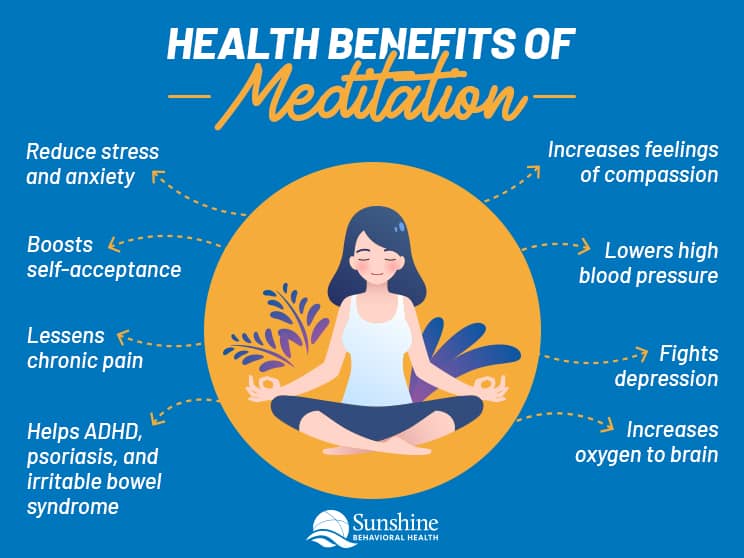How To Practice Mindfulness For Mental Health
Recent studies indicate that only a mere 8 minutes of mindful meditation can significantly reduce anxiety and improve focus. This powerful practice, though ancient in origin, has surged in popularity as a contemporary tool for enhancing mental well-being. But what specific techniques can you implement to harness the profound benefits of mindfulness?
Mindfulness, rooted in ancient Buddhist traditions, has found its place in mainstream mental health practices. In fact, the American Psychological Association reported a 30% increase in mindfulness-based interventions in therapy sessions over the past decade. Professionals advocate simple activities like mindful breathing and body scanning as effective methods for reducing stress and promoting a sense of calm.
- Begin with mindful breathing exercises to center yourself in the moment.
- Incorporate mindfulness into everyday activities, like eating and walking.
- Practice body scanning to become aware of physical sensations without judgment.
- Use guided mindfulness meditations for structured practice.
- Set aside dedicated time each day for mindfulness practice.

The Link Between Mindfulness and Mental Health
Mindfulness and mental health are closely connected. Practicing mindfulness can help reduce stress and anxiety. It allows individuals to stay present, which can improve mood and overall well-being.
Studies have shown that regular mindfulness practice can lower levels of depression. For example, people who meditate often report feeling more balanced. Mindfulness can change brain patterns associated with negative emotions.
Consider the biochemical changes that occur due to mindfulness. When practicing mindfulness, the body produces less cortisol. This hormone is known for increasing stress levels and affecting mental health.
Another significant benefit of mindfulness is improved focus. Staying present can help individuals manage their thoughts better. This enhanced mental clarity leads to better decision-making and emotional regulation.
Understanding the Process of Mindfulness
Mindfulness involves paying close attention to the present moment. It means being aware of your thoughts, feelings, and surroundings without judgment. This practice helps in achieving mental clarity and emotional stability.
Basic Mindfulness Techniques
One fundamental technique is mindful breathing. Focus on your breath as it goes in and out. This helps to ground you in the present.
Another method is body scanning. Close your eyes and mentally scan your body from head to toe. Notice any tension or discomfort and release it.
Engaging in mindful listening is also effective. Listen to sounds around you without reacting. This can make you more attuned to your environment.
Benefits of Practicing Mindfulness
Practicing mindfulness can lead to reduced stress and anxiety. It allows you to pause and reflect before reacting to situations, leading to better responses. This can contribute to a calmer, more balanced life.
Mindfulness has been shown to improve focus and concentration. When you are present in the moment, you can perform tasks more efficiently. This heightened focus can improve your productivity and performance.
It also helps in developing greater self-awareness. Understanding your emotions can lead to better emotional regulation. This has long-term benefits for mental health.
Mindfulness in Daily Activities
You can practice mindfulness during daily activities like eating. Take time to savor each bite, noticing the flavors and textures. This can make meals more enjoyable and fulfilling.
Another activity is mindful walking. Pay attention to each step and your surroundings. Feel the ground under your feet and the breeze on your skin.
Even chores like washing dishes can be mindful. Focus on the sensations of water and soap on your hands. Doing so can turn a mundane task into a calm and centering experience.
Steps to Incorporate Mindfulness into Your Daily Routine
Incorporating mindfulness into your day doesn't require much time. Start with mindful breathing. Take a few minutes each morning to focus on your breath.
Use everyday activities as mindfulness opportunities. When you eat, savor each bite. Notice the flavors and textures to make eating a mindful practice.
Consider setting reminders on your phone. These can nudge you to take short mindfulness breaks. A quick pause can help refocus your mind and reduce stress.
Another idea is to end your day with a mindfulness routine. Reflect on the events of the day without judgment. This can help you unwind and prepare for a restful night.
The Role of Meditation in Mindfulness
Meditation is a fundamental aspect of mindfulness. It involves focusing your attention and eliminating distractions. This practice trains your mind to stay present.
There are different types of mindfulness meditation. Breathing meditation is one common type, where you focus solely on your breath. This helps anchor your mind and reduces stress.
Another form is loving-kindness meditation. In this practice, you focus on sending positive thoughts to yourself and others. It enhances feelings of compassion and connection.
Mindfulness meditation can also involve guided sessions. These are led by an instructor or a recorded voice. Guided meditation can make it easier to stay focused.
Regular meditation has numerous benefits. It can lower anxiety, improve emotional health, and increase self-awareness. Studies show that consistent practice can even change brain structures related to memory and empathy.
To incorporate meditation, set aside time each day. Even a few minutes can make a big difference. Consistency is key to reaping the benefits.
Mindful Eating for Mental Health
Mindful eating involves paying close attention to the experience of eating. It’s about being aware of the flavors, textures, and smells of your food. This practice can help improve your relationship with food and contribute to better mental health.
One way to practice mindful eating is to eat slowly. Take your time with each bite and savor the taste. This can help you appreciate your meals more.
Minimize distractions during meals. Turn off the TV and put away your phone. Focus on the food and your body's hunger and fullness cues.
Engage all your senses while eating. Notice the colors and shapes of your food. Feel the textures and listen to the sounds as you chew.
Mindful eating can also help with emotional eating. By paying attention to your body, you can differentiate between physical hunger and emotional cravings. This helps you make healthier choices and avoid overeating.
Over time, mindful eating can lead to better mental well-being. It promotes a positive relationship with food and helps reduce stress and anxiety related to eating. Making it a habit can enhance both your physical and mental health.
Mindful Walking and Other Mindfulness Exercises
Mindful walking is a simple yet powerful way to practice mindfulness. It involves being fully aware of each step and how your body moves. This exercise can help clear your mind and reduce stress.
To practice mindful walking, find a quiet path. Focus on the sensation of your feet touching the ground. Notice the rhythm of your breath as you walk.
Take slow, deliberate steps. Pay attention to the movements of your legs and arms. Feel the gentle breeze and observe the surroundings.
Apart from walking, other mindfulness exercises can be beneficial. Consider mindful stretching exercises. These involve gentle movements to increase body awareness and relaxation.
Mindfulness practices can also include mindful listening. Take a moment to tune into the sounds around you without judgment. Whether it's birds chirping or the hum of a fan, these sounds can ground you in the present.
Incorporating various mindfulness exercises into your routine can enhance your well-being. Each practice offers unique benefits that contribute to mental and emotional health. Regular engagement in these activities can lead to a more balanced and peaceful life.
Mindfulness and Cognitive Behavioral Therapy
Mindfulness has become an essential part of cognitive behavioral therapy (CBT). It helps individuals focus on the present moment. This can make CBT sessions more effective and impactful.
Therapists often integrate mindfulness exercises into their sessions. Clients learn to observe their thoughts without judgment. This makes it easier to identify negative thinking patterns.
One key benefit is improved emotional regulation. When clients are mindful, they can better manage their reactions. This leads to more constructive behaviors and outcomes.
Research shows that combining mindfulness with CBT can reduce symptoms of anxiety and depression. The two approaches together create a powerful toolkit for mental health. They complement each other well in addressing various issues.
A typical CBT session might include a mindfulness practice at the start. This helps clients settle into the session and be present. Such mindfulness moments can make the therapy more productive.
Using mindfulness during therapy also builds skills that clients can use outside of sessions. This enhances long-term mental health and resilience. Regular practice can lead to lasting positive changes in one’s life.
Tips to Stay Committed to Mindfulness Practice
Staying committed to mindfulness practice can be challenging. Begin by setting a regular schedule. Consistency is key to making mindfulness a habit.
Create a dedicated space for your practice. A quiet, comfortable spot can help you focus better. It doesn't have to be fancy; just a place where you feel at ease.
Start small and gradually increase your practice time. Even five minutes a day can make a difference. As you become more comfortable, extend your sessions.
Use reminders to keep mindfulness in your daily routine. Set alarms on your phone or place sticky notes around your home. These prompts can help you remember to take mindful breaks.
Engage in mindfulness activities you enjoy. Whether it's mindful walking, eating, or listening, choose what resonates with you. Enjoyment makes it easier to stick with the practice.
Lastly, be gentle with yourself. It's normal to miss a session occasionally. The important thing is to return to the practice without self-judgment.
Frequently Asked Questions
Mindfulness is a powerful tool to enhance mental health. Here are some common questions and answers to help you understand better.
1. What are some benefits of practicing mindfulness?
Practicing mindfulness can reduce stress and anxiety, leading to a calmer mind. It also improves focus, emotional regulation, and self-awareness.
Enhanced concentration can boost productivity and performance in daily tasks. Mindfulness can also positively impact physical health by lowering blood pressure and improving sleep quality.
2. How often should one practice mindfulness?
The frequency of mindfulness practice varies from person to person. Starting with just five minutes a day can be highly beneficial.
As you get more comfortable, try extending your sessions to 20-30 minutes daily. Consistency is essential for reaping long-term mental health benefits.
3. Can children benefit from mindfulness?
Absolutely, children can greatly benefit from mindfulness practices. It helps them manage emotions, improve focus, and reduce stress.
Simple exercises like mindful breathing or guided meditations can be effective for kids. Schools increasingly include mindfulness programs to support students' mental well-being.
4. Is it necessary to sit still during mindfulness practice?
No, it's not mandatory to sit still while practicing mindfulness. There are various forms like mindful walking or eating that involve movement.
The key is being fully present in whatever activity you're engaged in. This flexibility makes it easier to incorporate mindfulness into everyday life.
5. How does mindful breathing work?
Mindful breathing involves focusing on each breath as you inhale and exhale slowly. This simple technique helps ground you in the present moment.
You become more aware of your body and sensations, reducing distracting thoughts and stress levels. It's a foundational practice in many mindfulness techniques.
Conclusion
Practicing mindfulness regularly can significantly enhance mental health. By incorporating simple techniques like mindful breathing and mindful walking, you can experience reduced stress and increased emotional well-being. Consistency and commitment are key to reaping these benefits.
Mindfulness is accessible to everyone, regardless of age or experience. Whether through meditation, mindful eating, or other exercises, making mindfulness a part of your daily routine can lead to lasting positive changes. Embrace these practices to foster a more balanced and fulfilling life.
